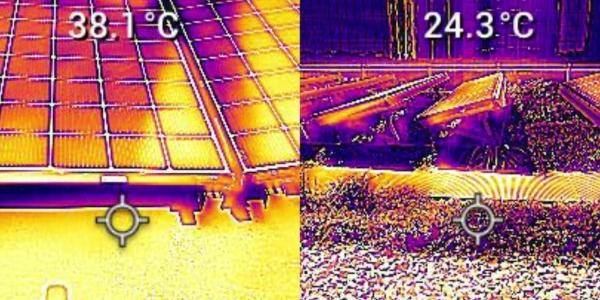Why is Cool Metal Roofing Good for the Environment?

By American Building Components.
Energy efficiency is one of the shining qualities of metal roofing, but what exactly makes metal sustainable?
Metal roofing is desirable for a variety of reasons, namely its durability and sustainability. But for home and building owners who are still questioning why metal roofing is so sustainable, here is what to know. The tell-tale sign of a sustainable and energy efficient roof is its ability to reflect the sun and keep buildings cool. Buildings without a cool roof require more energy to keep the building at a comfortable temperature, which means increased air pollution from the fossil fuels required to create electricity for air conditioning.
What is a cool roof?
A cool roof reflects and emits the sun's heat back to the sky instead of absorbing and conducting it to the building below. “Coolness" is measured by two properties, solar reflectance and thermal emittance. Both properties are measured from 0 to 1 and the higher the value, the "cooler" the roof.
This green building material offers Solar Reflectivity ratings and Solar Reflectance Index numbers to show the ability of our paint coatings to reflect and emit the sun’s energy. Solar Reflectivity (SR) or reflectance is the ability of a material to reflect solar energy from its surface back into the atmosphere. The SR value is a number from 0 to 1.0. A value of 0 indicates total absorbance and 1.0 indicates complete reflection.
The Solar Reflectance Index (SRI) is used to determine compliance with LEED requirements and is calculated according to ASTM E 1980 using values for reflectance and emissivity. To meet LEED requirements, a roofing material must have an SRI of 29 or higher for steep slope roofing and a value of 78 or higher for low slope roofing when evaluated under medium wind conditions.
Important resources
The Cool Roof Rating Council (CRRC) is an independent and nonbiased organization that has established a rating system. The core of the CRRC is its Product Rating Program through which roofing product manufacturers can label their products with solar reflectance and thermal emittance values measured by CRRC Accredited Independent Testing Laboratories. The CRRC does not set a minimum definition for "cool." However, code bodies and programs can reference its rating system. The CRRC simply lists the measured radiative property values in its Directory. Any roofing product can be tested as long as it is in compliance with the CRRC Program Manual, CRRC-1. A product's placement in the Directory does not mean that the product is "cool" as defined by any particular code body or program. For more information on the CRRC, visit their website at www.coolroofs.org.
The mission of the Cool Metal Roofing Coalition is to educate architects, building owners, specifiers, code and standards officials and other interested parties on the sustainable, energy-related benefits of cool metal roofing. This website provides many articles and studies of buildings using Cool Metal Roofing.
Have a question? AskARoofer.
Find your local roofing contractor in the RoofersCoffeeShop® Contractor Directory.
Original article source: American Building Components










Comments
Leave a Reply
Have an account? Login to leave a comment!
Sign In